According to a report conducted by the American Psychological Association, persistent stress (also known as chronic stress) negatively impacts the health of teens and adults alike.
What’s concerning is that mental health has been on the decline for years, and current events (such as the global pandemic) have further exacerbated the situation.
I’ve always considered myself to be relatively good at managing stress by exercising regularly and protecting the quality of my sleep. But I’ve noticed that my ability to manage stress has deteriorated over the past two years, and that I get snappy and frustrated more often than I used to.
As a result, I’ve been looking for effective ways to relax and relieve stress. In this blog post, I’ll share some of the stress relief gadgets my family and I have used successfully (and that have sufficient scientific evidence to back up their efficacy).
Note that I consider the gadgets I’m covering in this article advanced techniques for stress relief that go beyond the basic methods I’ve been using for years, including regular exercise, good sleep hygiene, a proper diet and many other factors that constitute a healthy lifestyle.
While technology can help influence how you perceive stress regardless of your lifestyle, I strongly recommend getting the basics right first before you invest in stress-relief gadgets.
I should also mention that I won’t be covering things like aromatherapy, essential oil diffusers, fidget spinners and stress balls. While I’m not discounting the ability of these tools to provide stress relief, I don’t think that they’re quite as effective as the methods I’ll be discussing in this article.
Note: Some popular essential oils (e.g., lavender) contain endocrine-disrupting chemicals that I’d rather stay away from.
With that said, I encourage you to experiment with some of these methods in combination with more advanced techniques like tactile stimulation and mindfulness.
Why Stress Isn’t Always Bad
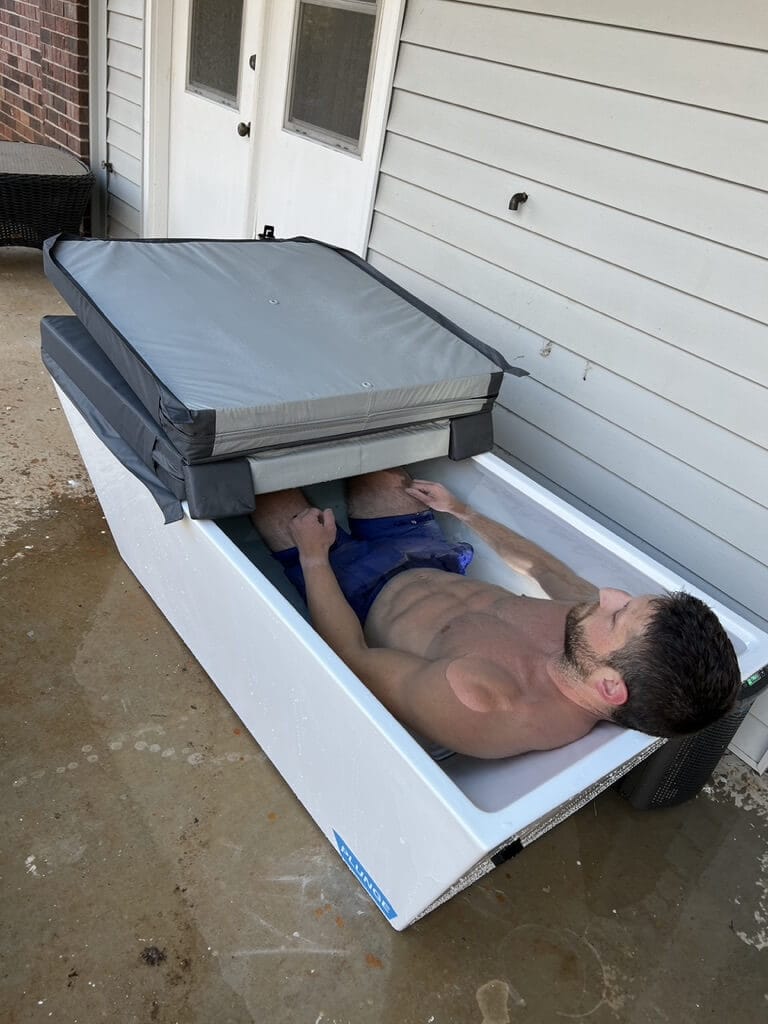
Before we talk about stress relief gadgets, it’s important to understand the basic principle that stress (and our response to it) isn’t inherently bad.
There’s a good reason why our body responds to stress the way it does, by releasing cortisol, increasing your heart rate and blood pressure and dilating your pupils.
In short, our stress response is an ancient mechanism that was essential for our survival as a species.
From an evolutionary perspective, the stress response is meant to kick in only when our lives are at risk (i.e., when you’re in a state of heightened sympathetic alert). For our ancient ancestors, that might have been when a sabertooth tiger was about to attack and they had to either fight or flee.
But these days, most people don’t have to fight or flee to survive. Instead of wild beasts, our stress stems from concerns about things like job security, kids, finances, social media and countless other factors that nudge us to stay on biological high alert much longer than is healthy.
Our bodies are built to stay in a state of heightened sympathetic alert only for short bursts and only on occasion.
That chronic stress contributes to anxiety, depression and several other mental health issues, because our bodies haven’t evolved to handle it.
One way to resolve that problem is to remove yourself from the chronic-stress-inducing environment. For example, you could gather your tribe and live in the woods like our early ancestors did for millennia.
Of course, this solution isn’t easy to implement because we’ve all come to appreciate the benefits of modern life.
So unless you want to abandon the convenience of life as you know it, you have to find other ways to better manage your stress. That’s where gadgets like the ones I’m introducing below can help.
It’s also worth noting that chronic stress might not immediately manifest in physical or psychological issues. Sometimes, people can endure chronic stress for long periods (without noticing it) before they break down and can’t handle it anymore. You might have noticed that phenomenon yourself by feeling pretty good during the week only to snap on the weekend once the pressure subsides.
Top Four Gadgets for Stress Relief

The gadgets in the list below are ordered alphabetically and not based on any sort of ranking.
1. Apollo Neuro
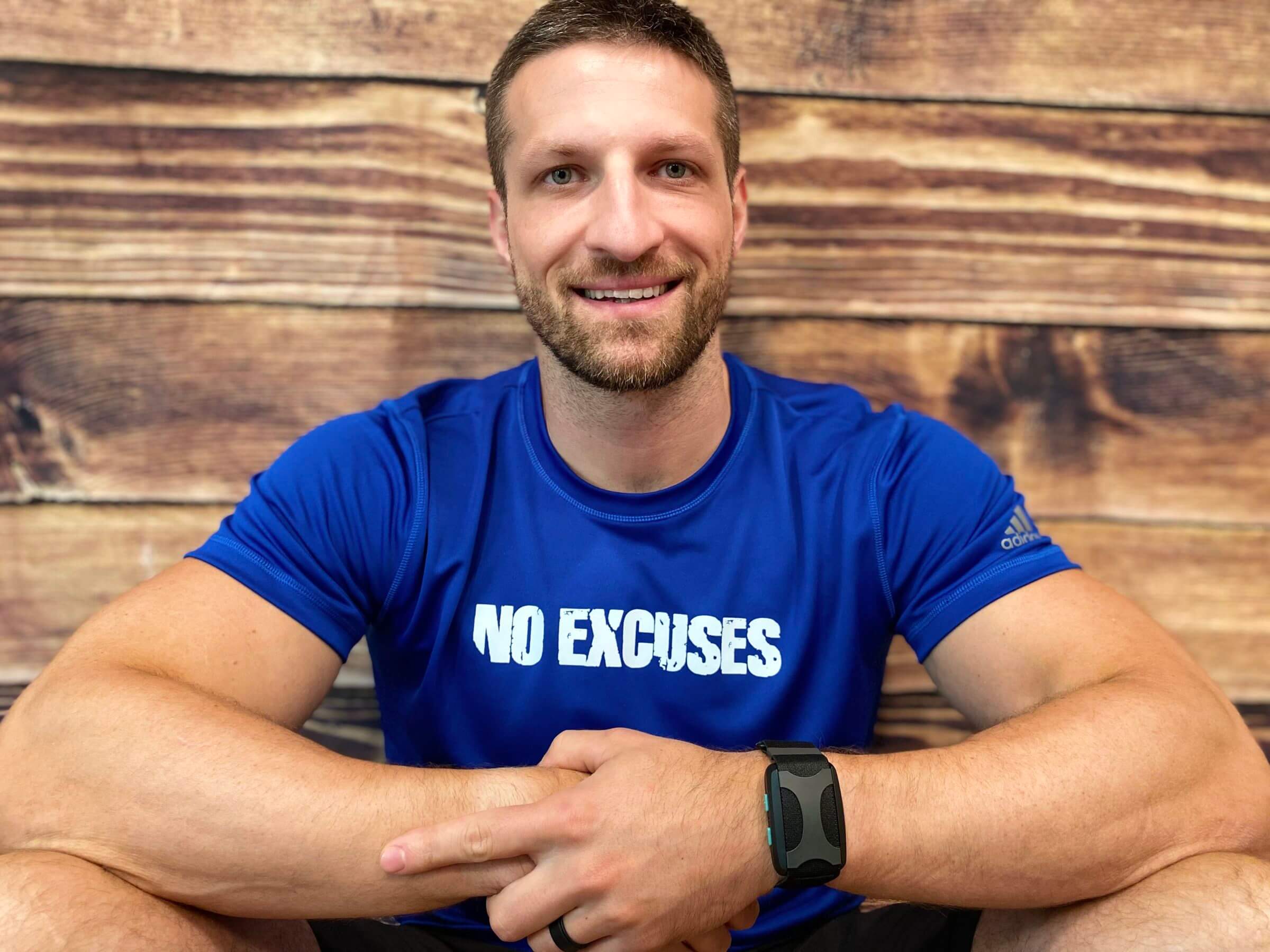
I’ve been using Apollo almost every day for the past few months.
Apollo is a wrist-worn device that provides tactile stimulation in the form of vibrations that can stimulate either the sympathetic or the parasympathetic branch of your nervous system.
Pros
- Unobtrusive and easy to use.
- Clinically-validated efficacy.
- Provides stress relief in as little as 30 seconds.
- The more you use Apollo, the more effective it is.
- Can be used to stimulate the sympathetic or parasympathetic branch.
Cons
- Price.
I’ve written about the role of the sympathetic and parasympathetic branches of the nervous system elsewhere on this blog (see here and here). But in a nutshell, the sympathetic branch is responsible for the “fight or flight” response and the parasympathetic branch is responsible for “resting and digesting.”
In other words, when your body responds to stress, the sympathetic nervous system is overactive and causes the classic stress response symptoms, such as an increased heart rate, dilated pupils, etc. During that time, the parasympathetic nervous system is suppressed.
Apollo uses special frequencies to stimulate the parasympathetic branch and suppress the sympathetic branch. The advantage of using Apollo is that it helps you to build resilience to stress and to recover from it more quickly.
Apollo can also be used to upregulate sympathetic activity, which can be useful to get a boost of energy in the morning or to prepare for an important meeting or competition.
For the science nerds out there, Apollo helps improve your vagal tone (the activity of the vagus nerve). I think of using Apollo as being a workout for my nervous system, and I’ve been successfully using Apollo since the summer of 2020 to get my nervous system back to baseline when I get stressed during the day or when I feel like I need extra help to wind down before going to bed.
Apollo costs $349 (or $32 per month). If you want to give it a try, make sure you use the link below to get $60 off your purchase (plus a free sleep band). You can also use code MICHAEL at checkout if the discount doesn’t auto-populate.
To learn more about Apollo and the scientific evidence behind tactile stimulation, make sure you check out my full hands-on Apollo wearable review and my deep dive into the research behind whether Apollo works.
2. CalmiGo
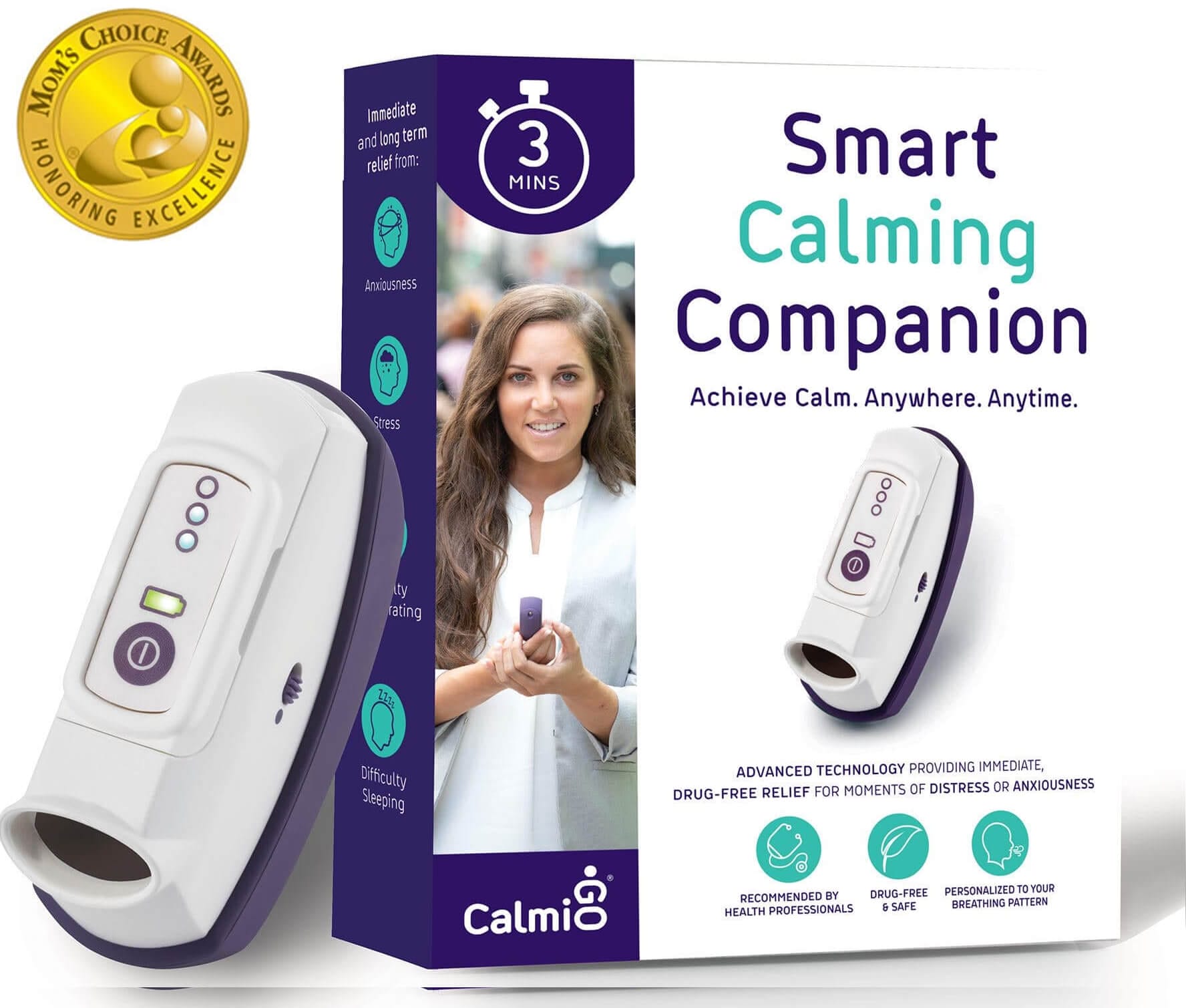
CalmiGo is a relatively new addition to my stress-relief arsenal. It’s a breathing device that encourages you to extend your exhale in a way that activates your parasympathetic nervous system.
Pros
- Combines exhalation prolongation and natural scents to compound relaxing effects.
- Portable and easy to use.
- Each session takes only three minutes.
- Based on sound scientific principles.
- Great for people who aren’t familiar with breathing techniques.
Cons
- Might not be necessary for someone who has already mastered the art of breathing.
Using CalmiGo is easy: you hold the device with one hand like an inhalator, then you inhale through your nose and exhale through your mouth. Tactile feedback tells you if your exhale was long enough. You repeat this breathing cycle for three minutes.
The idea behind extending your exhale is that it activates your parasympathetic nervous system, thus providing almost instantaneous stress relief.
Additionally, CalmiGo uses scents derived from natural oils and visual cues to support your breathing sessions and help you relax.
I think CalmiGo is a viable option for anyone who is new to stress-relieving breathing techniques, particularly because each session of CalmiGo only takes three minutes and the device’s small form factor means you can use it anywhere you like.
If you’re already making breathing exercises part of your daily routine, I don’t think CalmiGo provides much in the way of additional benefits. I’ve been practicing breathing techniques relying on exhalation prolongation for months and don’t need a device for that. But as I mentioned above, it’s a great tool to master exhale prolongation!
As far as scientific evidence is concerned, CalmiGo lists only one (sponsored) randomized control trial on their webpage that demonstrates the stress and anxiety-reducing effects of the device. However, they currently have five clinical trials in progress, including one in collaboration with the Mayo Clinic, exploring how the product may improve vascular health and reduce cardiovascular disease risk, and another in collaboration with Northwell Health, investigating whether CalmiGo can help manage anxiety and panic attack symptoms.
While that research is still in progress, there is sufficient scientific evidence behind the concept of exhalation prolongation as a way to reduce stress and activate the parasympathetic nervous system. There is also reliable evidence that scents can decrease sympathetic activity and elicit relaxation.
As a result, I do believe that CalmiGo can be a valuable tool for stress relief — especially for those who haven’t mastered the art of breathing and who might not respond to scents as strongly as others.
CalmiGo costs $199 and is available in two different colors (grey and purple). You can also choose between different scents, including lavender, peppermint and bergamot (citrus). While lavender is known to have a relaxing and mind-calming effect, it’s also a natural source of endocrine-disrupting compounds (estrogenics) that I try to stay away from.
For this review, I used the bergamot and peppermint scents. In general, I avoid scented products but the company claims their scents are derived from natural oils and don’t contain any phthalates or other endocrine-disruptors.
If you want to give CalmiGo a try, make sure to use code Kummer30 to get $30 off your purchase!
3. Muse S
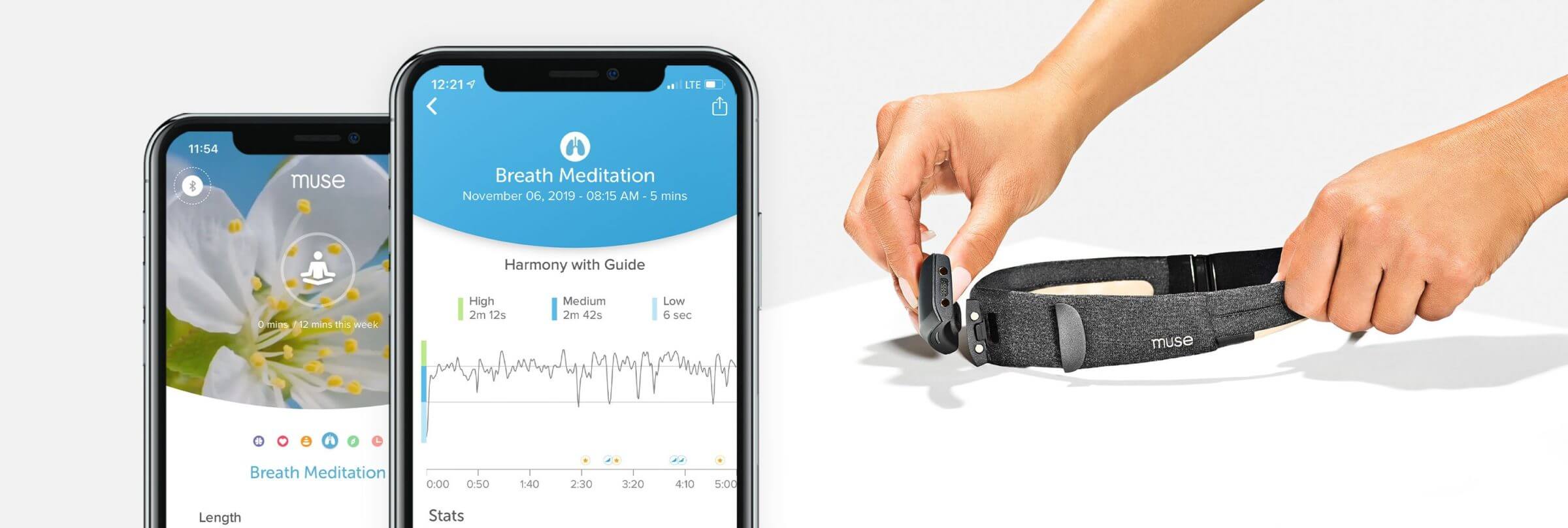
Muse S is a brain-sensing headband and the newest addition to my stress-relief toolset. What I love about Muse S is that I can use it not only during the day to refocus, reduce anxiety and relieve stress, but also to recover during the night.
Note that Muse offers two types of headbands: the Muse 2 and Muse S. Only the Muse S has sleep tracking capabilities, and that’s the one I have.
In addition to the advanced technology packed into the Muse S — such as an electroencephalogram (EEG) to monitor brain waves and an optical heart rate sensor (i.e., a pulse oximeter) — the accompanying mobile app offers a variety of guided meditation sessions and sleep journeys.
Pros
- Accurate sleep tracking.
- Comfortable to wear.
- Packed with high-tech sensors.
Cons
- Premium subscription costs extra.
The core focus of Muse is to help you meditate and to capture the impact of meditation on your brain waves, heart rate and nervous system.
I used to think of meditation and mindfulness as techniques that were “too far out there” — as stuff that only yogis and hippies would practice. But since learning more about how breathing and mindfulness can influence and even control parts of the body that were thought to be entirely autonomous (like the autonomous nervous system), I’ve completely changed my mind on the subject.
In a nutshell, meditation and mindfulness can have a profound impact on your health and well-being and you can easily measure their impact on your body by watching how certain biometrics (including brain activity, heart rate and heart rate variability) change during and after a session.
I’m a data-driven person and seeing changes in my biometrics (not to mention changes in my mood and perceived stress levels) has helped me adopt new methods and techniques that I might have been critical or dismissive of before.
Muse has been an instrumental factor in that transformation because it visualizes the changes that I’ve been feeling during and after mindfulness sessions in a way that even a data nerd like me can understand.
For example, the Muse mobile app illustrates how calm and relaxed my mind gets during each session, based on the activity of my brain waves and my heart rate.
The other thing I absolutely love about Muse S is that it doubles as an accurate sleep tracker, thanks to its built-in EEG.
In other words, Muse S is one of the few devices that can accurately detect REM sleep — an active phase of sleep that’s hard to distinguish from light sleep without monitoring brain wave activity.
As I mentioned above, Muse is available in two editions. Muse 2 starts at $250 and Muse S (the one I have) starts at $350. The main difference between these two devices is the sleep tracking capability, thanks to an extended battery life and a more comfortable headband.
In addition to the hardware, you should also consider signing up for Muse’s premium subscription to get access to over 500 guided meditation sessions, sleep journeys and more. The annual subscription costs $13 per month or $47.50 per year.
You can learn more about the device in my dedicated Muse S review.
If you want to give Muse a try, make sure to use code MKUMMER to get 10% off your purchase!
4. TouchPoints
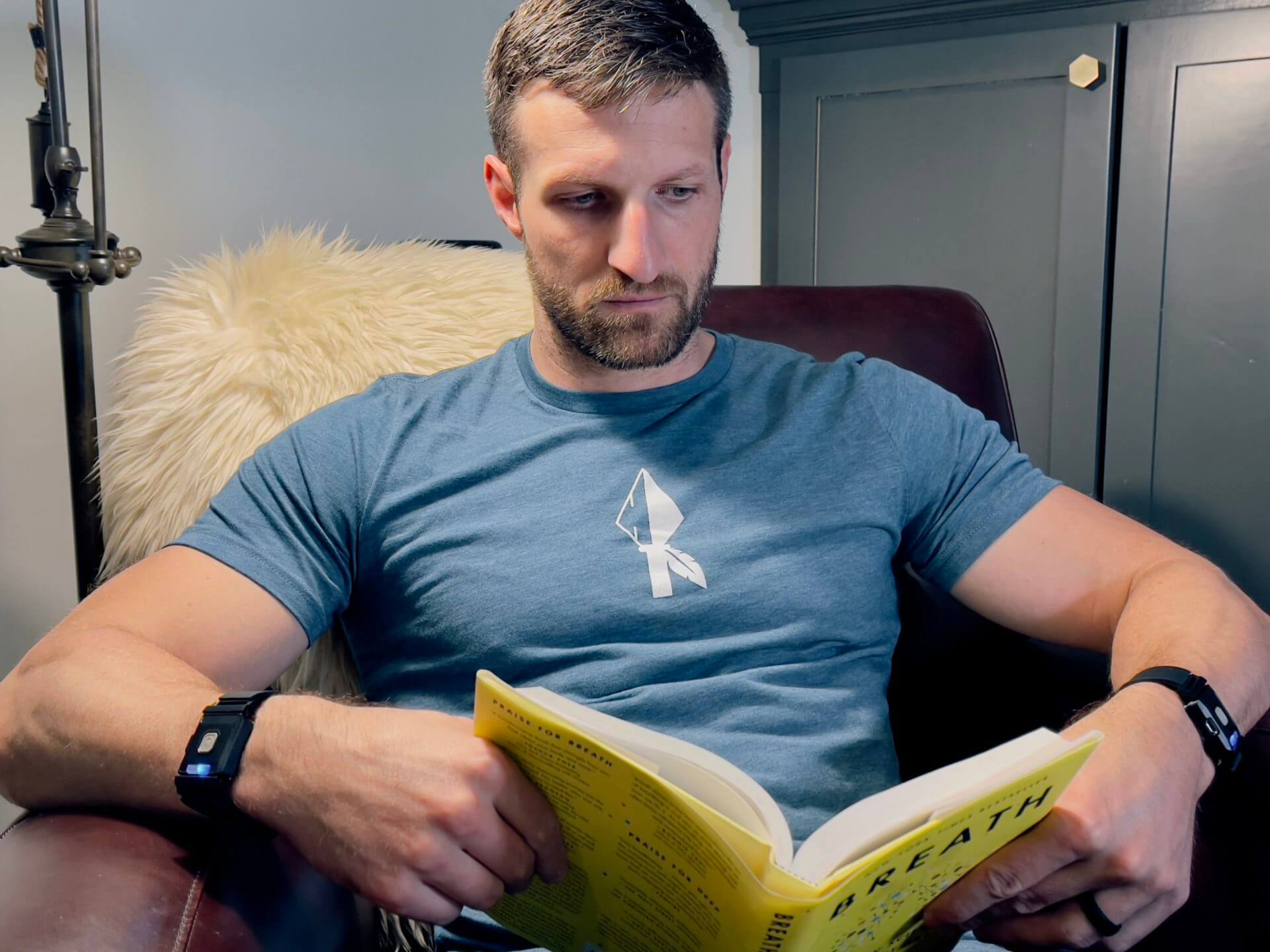
TouchPoints is another tactile stimulation device that all members of the Kummer family (including the kids) have been using for the past few months.
In comparison to most other tactile stimulation devices, TouchPoints offers bilateral tactile stimulation. That means you have to wear a TouchPoint on both sides of your body (i.e., on each wrist) for it to work.
Pros
- Offers bilateral tactile stimulation.
- Doesn’t require an app, phone or subscription.
- Effective at relieving stress in seconds.
- Can be worn on your wrist or clothing.
- Attractive price.
Cons
- Not as futuristic-looking as other devices.
- Limited to stress relief.
TouchPoints alternatingly engages both hemispheres of the brain with a single goal of downregulating the sympathetic branch of the nervous system, relieving stress and improving sleep.
While TouchPoints can only do one thing, it does that one thing incredibly well. In other words, you can experience relief within a few seconds to a few minutes, depending on your level of stress or anxiety.
The other advantage of TouchPoints is that it doesn’t require a mobile app or a Bluetooth connection to your phone. All you need to get started is the two TouchPoints modules, which can be worn on your wrists, in your pants pockets or on your clothing (using optional clothing clips).
I’ve found that sticking the TouchPoints modules into my pockets or clipping them to my clothing is the most convenient way to use them (because my wrists are occupied by my Apple Watch and WHOOP strap).
We have two sets of TouchPoints in the Kummer household. One set is usually used by the kids (who use them before bedtime to help them calm down) and the other by my wife and I during the day.
You can get a pair of TouchPoints for as little as $168 if you use code MK.
To learn more about TouchPoints and the scientific evidence behind it, make sure to check out my hands-on TouchPoints review!
Do You Need Stress-Relief Gadgets?

While gadgets like the ones I’ve introduced in this article are effective, I don’t recommend using them at the exclusion of making lifestyle changes that naturally facilitate stress relief, such as exercise, proper sleep or just doing less.
I’m sure you’ve heard the saying that “less is more,” and the truth is that applying that principle can have a profound impact on how you perceive and manage stress.
For example, I’ve noticed that the fewer things I put on my plate (such as activities and to-dos), the less stressed I am. I’ve also had great success with clearing my mind using breathing exercises and reconnecting with nature by walking barefoot in my backyard or sitting shirtless in the sun for 20 minutes.
In other words, a temporary “change of scenery” or breaking out of your routine for a moment can have profound effects on how you perceive stress.
Unfortunately, I don’t always have the luxury of breaking out of my routine right at the moment when I need it the most. That’s when gadgets can help. Much like the dietary supplements I regularly use, I leverage gadgets to fill gaps in my stress management framework instead of using them as a replacement for proper sleep hygiene, a good diet, regular exercise and other lifestyle choices.
Six Strategies to Reduce Stress and Anxiety You Can Do at Home (That Don’t Require Any Gadgets)
As I mentioned above, stress management starts with your lifestyle. If you don’t take the basic steps to better manage stress, no gadget in the world will make your life entirely stress-free.
Here are the five strategies that I aim to leverage on a daily basis to better handle stress:
- Do less.
- Breathe.
- Exercise.
- Sun exposure.
- Meditation or mindfulness.
- Increase your micronutrient intake.
1. Do Less
Every few weeks, I get overwhelmed with all the things that I have to do for my day job, this blog and my supplements company. When I reach that point, I take a step back and rigorously assess what I really want to do to be successful versus what other people want me to do.
As soon as I cut my to-do list down to the stuff that I enjoy doing and that makes a difference in my business, I immediately feel better. In other words, productivity and stress management is all about the things you don’t do.
2. Breathe
Next on my list is focusing on breathing. You can do that as part of a meditation session or in an entirely unstructured manner. I shift my focus to how I breathe several times a day to ensure that I breathe only through my nose, that I breathe through my belly (diaphragm) and not my chest, and that I prolong my exhale.
Coincidentally, I’ve noticed how my focus shifted to how I breathe while typing these lines. That’s probably because the kids just got up to get ready for school and I instinctively know that my quiet time is over for the day.
Additionally, I focus on breathing while exercising and during my lunch break. The latter, I usually spend shirtless in my backyard, watching our chickens forage. That’s part of my self-care routine and it helps me stay grounded during stressful times.
3. Exercise
Rigorous exercise is another great way to trigger the release of “feel good” hormones that can counter the effects of stress hormones. I do CrossFit several times a week to get my heart pumping, blow off steam and release these feel-good hormones I’ll talk more about in the FAQ section below.
4. Sun Exposure
There are special molecules in your skin called chromophores that can boost your mood by stimulating keratinocytes to make beta-endorphins in the pituitary gland of the brain. The primary function of these beta-endorphins is to reduce stress and to increase the levels of anti-inflammatory cytokines.
5. Meditation
The last technique — which I just started implementing a few weeks ago — is meditation or mindfulness. The latter simply means to be present and to focus on whatever it is you’re doing at the moment. In the simplest case, that could mean focusing on how you feel, how your body feels or how you’re breathing.
Just sitting or lying still for 10 minutes and paying attention to how you breathe can help you calm your mind, lower your heart rate and activate the parasympathetic branch of your autonomic nervous system — the one that’s responsible for resting and digesting.
If you’ve never tried these techniques, you’d be surprised how well they work (especially if you combine them). That’s why I like to take 10 to 20 minutes every day to sit in the backyard (do less), without a shirt (sun exposure) and think about nothing but the way I breathe through my nose (breath, mindfulness).
6. Micronutrients
Studies have shown that chronic stress increases the body’s metabolic needs. In other words, you need more vitamins and minerals when you’re under stress. That’s why you should consider increasing your intake of certain micronutrients, ideally from whole-food sources.
As I mentioned elsewhere in this article, organ meat, and especially beef liver, is the best source of bioavailable micronutrients. That’s why my the entire Kummer tribe supplements with desiccated beef liver capsules from MK Supplements. Each serving contains over 25 vitamins, minerals and coenzymes in their most bioavailable form. Check them out if you’re not a fan of consuming fresh organs.
Frequently Asked Questions
While we don’t know exactly what causes ADHD, stress and anxiety don’t appear to be the main factors. Instead, some research points towards dietary factors, and there is also a correlation between mouth breathing in children and teens with symptoms of ADHD.
As a result, it might be worthwhile teaching mouth-breathing kids how to breathe through their noses instead. One of the best hacks to encourage children and adults alike to breathe through their noses at night is taping the mouth using surgical tape, which sounds crazy, but does work!
Some people say that the alternating action of squeezing the ball and then releasing tension can be a stress buster. Based on my experience, if you squeeze a stress ball while remaining in a situation or mindset that stresses you out, it won’t have any stress-relieving impact.
However, if you focus on that stress ball and be mindful about squeezing it and then releasing the tension, I certainly believe that it can be a stress reliever. That’s because by focusing on the ball (instead of everything that is going on around you), you’re being mindful; it’s that mindfulness that makes the stress ball effective.
The same is likely true for other stress relief toys, like fidget cubes or other desk toys. Heck, even spending 10 to 15 minutes with a coloring book can provide stress and anxiety relief because you’re being present while using it.
Yes, they certainly can. Anything that makes you feel good and that causes the release of “feel-good” hormones — such as dopamine, oxytocin and serotonin — can help with stress relief, because these hormones usually counteract cortisol (the primary stress hormone).
Studies have shown that cortisol decreases and serotonin and dopamine increase following massage therapy. That’s one of the reasons why I love massages — especially those that allow me to be passive.
In other words, I prefer getting a massage instead of using a massage gun like Theragun or scalp massager myself. I’ve also noticed that using electrical muscle stimulation devices, such as the PowerDot, has stress-reducing effects that can mitigate tension headaches and similar issues.
CalmiGo and Muse S are available on Amazon (see here and here), but you won’t be able to use my discount codes if you purchase from there. Apollo and TouchPoints are not sold on Amazon.
Yes, moderate and intermittent stress can make you stronger. There is a concept called hormesis, and it’s the reason why you grow muscle tissue after strength training and why intermittent fasting or cold exposure can improve your metabolic health.
However, the two key phrases here are “moderate” and “intermittent.” Chronic stress, much like constant cold exposure or a chronic caloric deficit, harms your body and causes illness in the long run.
For many people, consuming a glass or two of their favorite alcoholic beverage takes off the edge and makes them relaxed. That’s likely the reason why so many people consume alcohol before bedtime. I used to drink a glass of wine almost every night because it made me feel good and relaxed.
The problem is that alcohol is a major sleep disruptor that might make you fall asleep quicker but it also prevents your body from getting enough restorative sleep (slow-wave and REM sleep). In other words, drinking alcohol before going to bed is a net loss for your body.
If you must drink, I recommend doing so several hours before bedtime to allow your body to metabolize the alcohol and thus reduce its negative impact on your sleep.
Another option is to drink an alcohol “alternative” like Hard Ketones. This product actually contains a unique type of alcohol that interacts with the body in positive ways, rather than causing the negative outcomes you would get from drinking “regular” alcohol. It can give you a buzz and it tastes like the real thing, but the one downside is that can be pricey.
Final Thoughts on Stress Relief Gadgets
Unless you’re living in a remote area that’s disconnected from all the craziness that’s going on in the world, you’ll likely have to learn how to manage your stress. While there are several techniques you can start using today, such as breathing or meditation, you might benefit from some of the stress relief gadgets I’ve mentioned in this article.
That’s particularly true if you’re dealing with stress levels that go way beyond what the human body can naturally sustain. I know it sounds crazy, but I’ve come to the conclusion that sometimes we have to take extraordinary steps to counter the extraordinary challenges of our modern lives.
Living a healthy life that’s based on a species-appropriate diet, sufficient physical activity, good sleep hygiene and moderate, intermittent stress isn’t rocket science, but it can be difficult to implement.
That’s where I believe stress-relieving technology such as Apollo, CalmiGo, Muse or TouchPoints can help.
But now it’s your turn! What are some of the techniques and gadgets you’ve tried to relieve stress? And have they helped? Let me know in the comments below!

Michael Kummer is a healthy living enthusiast and CrossFit athlete whose goal is to help people achieve optimal health by bridging the gap between ancestral living and the demands of modern society.
Medical Disclaimer
The information shared on this blog is for educational purposes only, is not a substitute for the advice of medical doctors or registered dieticians (which we are not) and should not be used to prevent, diagnose, or treat any condition. Consult with a physician before starting a fitness regimen, adding supplements to your diet, or making other changes that may affect your medications, treatment plan or overall health. MichaelKummer.com and its owner MK Media Group, LLC are not liable for how you use and implement the information shared here, which is based on the opinions of the authors formed after engaging in personal use and research. We recommend products, services, or programs and are sometimes compensated for doing so as affiliates. Please read our Terms and Conditions for further information, including our privacy policy.

Hi, I have paroxysmal AFib. When in afib, stimulating the vagus nerve slows down the heart rate. I would like to purchase the Apollo, but their customer service could not answer my questions related to the vagus nerve effect. Can you let me know what is the effect of the Apollo device on the vagus nerve? Thank you so much!
Hey Marta,
unfortunately, I don’t know what type of reaction Apollo would trigger in the event of AFIB. I can tell you Apollo down regulates the sympathetic branch of the nervous system which usually leads to a decrease in HR and an increase in HRV. Whether or not that’s beneficial in your case, I can’t answer. I suspect Apollo won’t make recommendations because of liability reasons. So I’d recommend checking with your cardiologist to see what he/she recommends.
Thank you so much Michael, I truly appreciate your prompt answer!
Thanks for your thoughtful information here. You mention a few devices I am considering – your insights are helpful! One I have used and think is good for stress, HRV, meditation is HeartMath.com’s Inner Balance. They have a ton of HRV research as well. The Muse S (v1) headband has gold connection points that rubbed off around my ear. I might qualify for a warranty exchange, we’ll see soon. It is a good device too, gives me insight into my sleep.
Love your blog and all the effort you put into this for us. Thanks!
Thanks, I appreciate your feedback, Scott!
PS: Apologies for the late reply. Your comment got accidentally deleted by my anti-spam plugin and I just found out about it.
Thanks for another great review article, Michael!
One question: Does the stimulation that the Apollo Neuro provides feel similar to that of the Touchpoints bracelets?
I already have the Touchpoints bracelets and they did not really work for me. I found the alternating buzzing quite obstrusive and it would annoy me instead of calming me down. So considering that I did not like the Touchpoints bracelets do you think it would be worth for me getting the Apollo Neuro? As the stimulation is unilateral only and probably a little bit gentler than that of the Touchpoints I was thinking they it might be worth giving them a try.
Thanks in advance for your advice!
Daniel
Thanks Daniel!
I feel like Apollo is a little gentler — likely because it has a less-powerful motor. Plus, you can adjust the intensity using the Apollo app. That said, I think you’d get used to the vibrations — at least, I did.
Hope that helps!
Cheers,
Michael